Version 2
![]() I have made a lot of progress on the lamp over the last week. I settled on placing the pulley assembly on the underside of the upper section. After designing this piece, I printed the lower and upper sections of version 2 as well as the counterweight sphere and reflector. I then assembled the pieces and installed the v bearings in the upper section. I decided to use a kevlar braided fishing line as the rope for the counterweight system due to its strength relative to its diameter. I then installed the sunset lamp into the base and placed the cylindrical shade around it.
I have made a lot of progress on the lamp over the last week. I settled on placing the pulley assembly on the underside of the upper section. After designing this piece, I printed the lower and upper sections of version 2 as well as the counterweight sphere and reflector. I then assembled the pieces and installed the v bearings in the upper section. I decided to use a kevlar braided fishing line as the rope for the counterweight system due to its strength relative to its diameter. I then installed the sunset lamp into the base and placed the cylindrical shade around it.
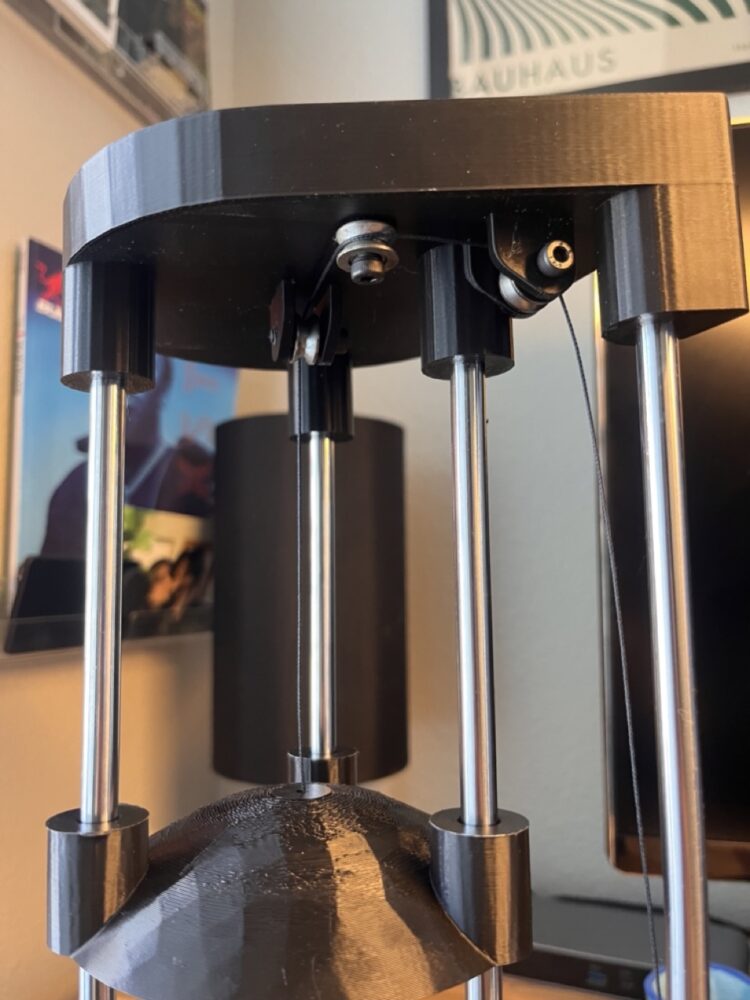
![]()
![]()
After assembling the main section of the lamp, I tested its motion and its light output before modifying the reflector. I then removed the reflector and began to adhere disco mirror tiles to the underside.
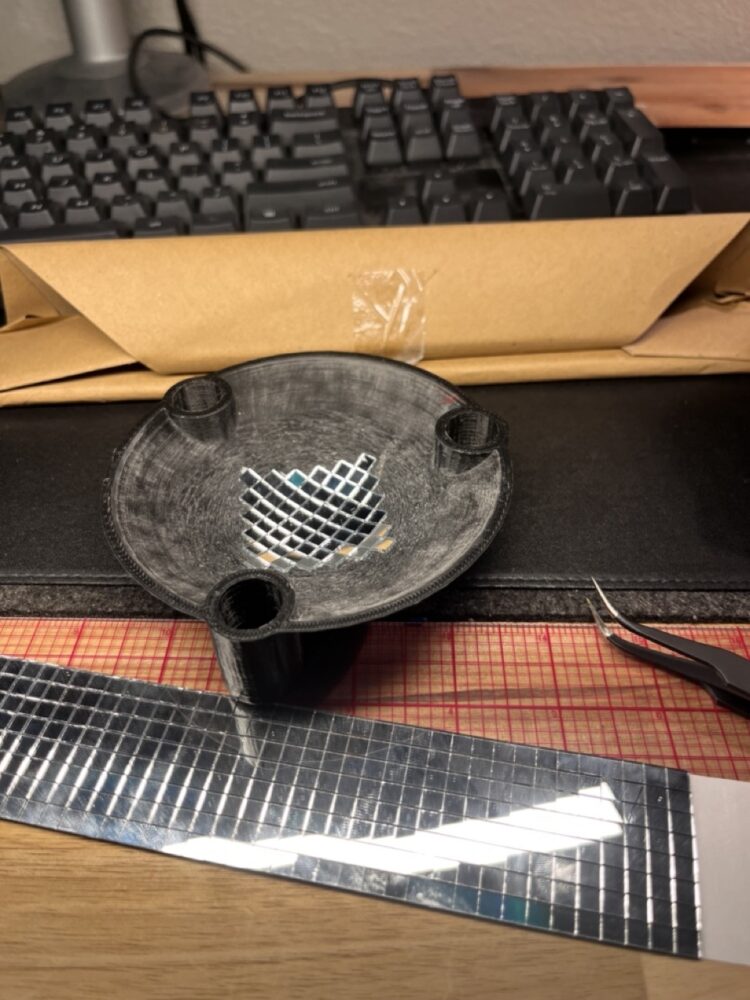
![]()
I then reattached the reflector carriage to the main lamp to see how the mirror tiles reflected the light.
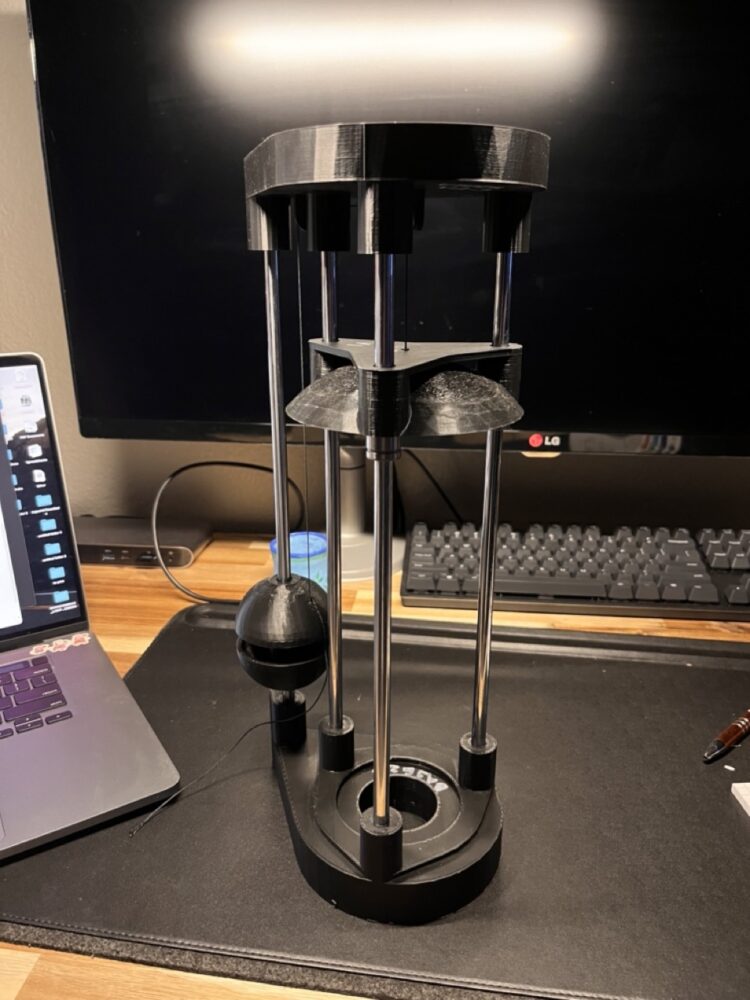
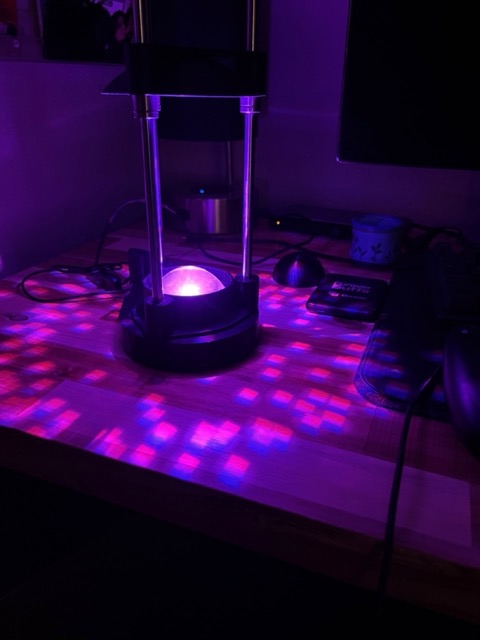
Overall, I was happy with the functionality of this version of the lamp. It aligned with the specifications laid out in my previous post. However, I was not happy with the outward appearance of the lamp. It leaned too heavily towards the cold nature of the industrial aesthetic and did not match the overall space age aesthetic I was going for originally. It was also visually complex which directly opposed the ethos of minimalism.
Version 3
I then went back to the drawing board to see if I could figure out a solution that did not require an additional support rod. This would allow the lamp to return to a cylindrical footprint without adding too much visual clutter. The main design challenge was allowing the spherical counterweight to pass through the reflector carriage. I solved this by creating a cutout in the reflector. Although this would take away from the rotational symmetry of the reflector carriage and create a gap in the mirror tile reflections, this solution is overall more aesthetically appealing. The reflector carriage would slide along the front two rods, and the counterweight would slide along the rear rod.
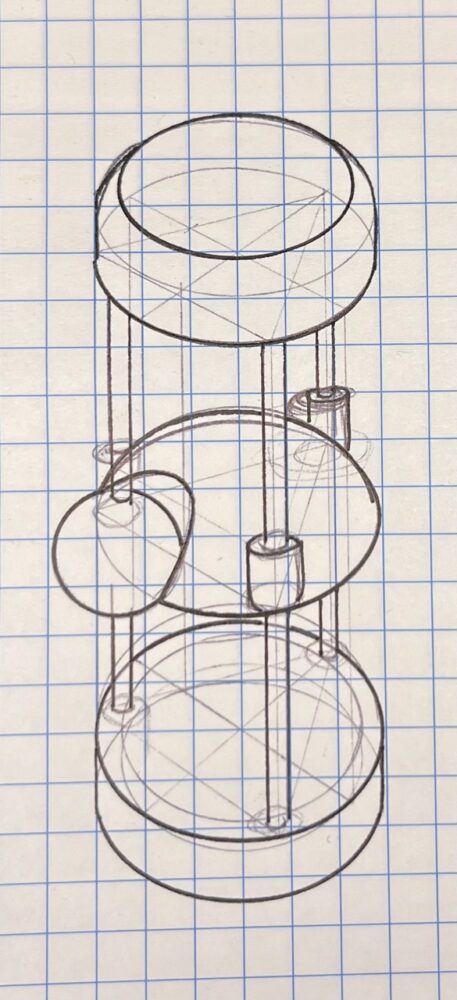
This in turn created another problem. At its lowest setting, the lamp should be usable as a night light. Having a cutout in the reflector meant that light would be allowed to escape through this hole in the lowest position reducing the lamp’s utility. I solved this by designing a small section on the back of the base that fits seamlessly into the curvature of the reflector in its lowest position.I decided to remove the support cylinders from the base and upper to simplify the silhouette. Below is a sketch of version 3 of the lamp. The path between the counterweight sphere and the center of the lamp was unobstructed in this configuration allowing me to simplify the pulley system to improve reliability.
I intend to paint the lamp in a bright glossy color. I am leaning towards pastel colors to fit the mid century modern aesthetic or metallic orange, blue or white to match the space age aesthetic. Below are some renders highlighting the design changes and some color options.
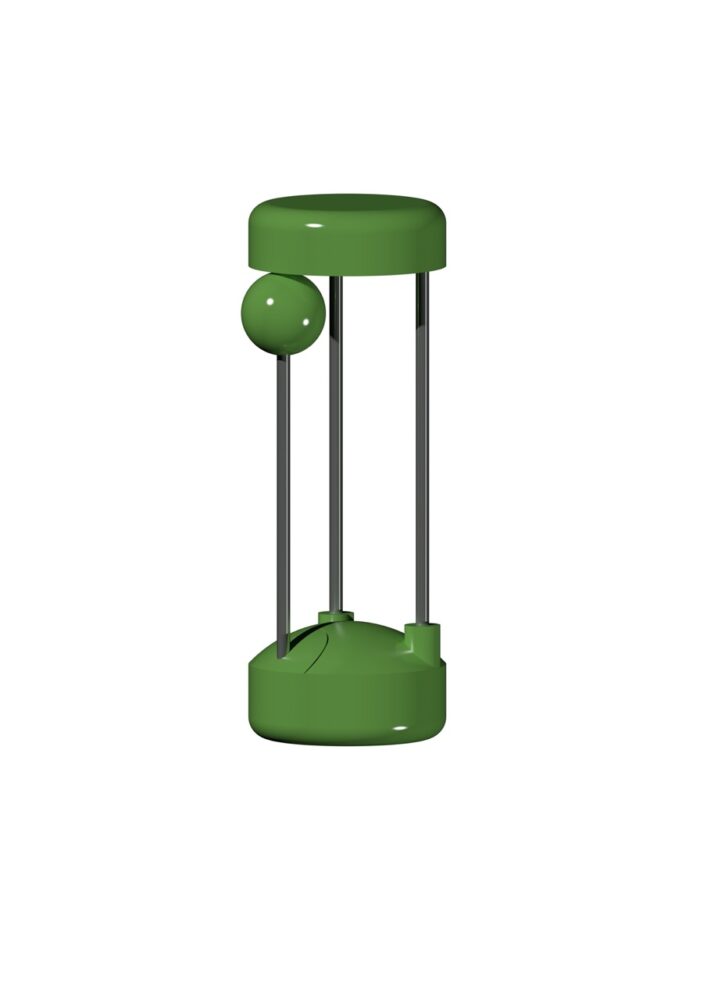
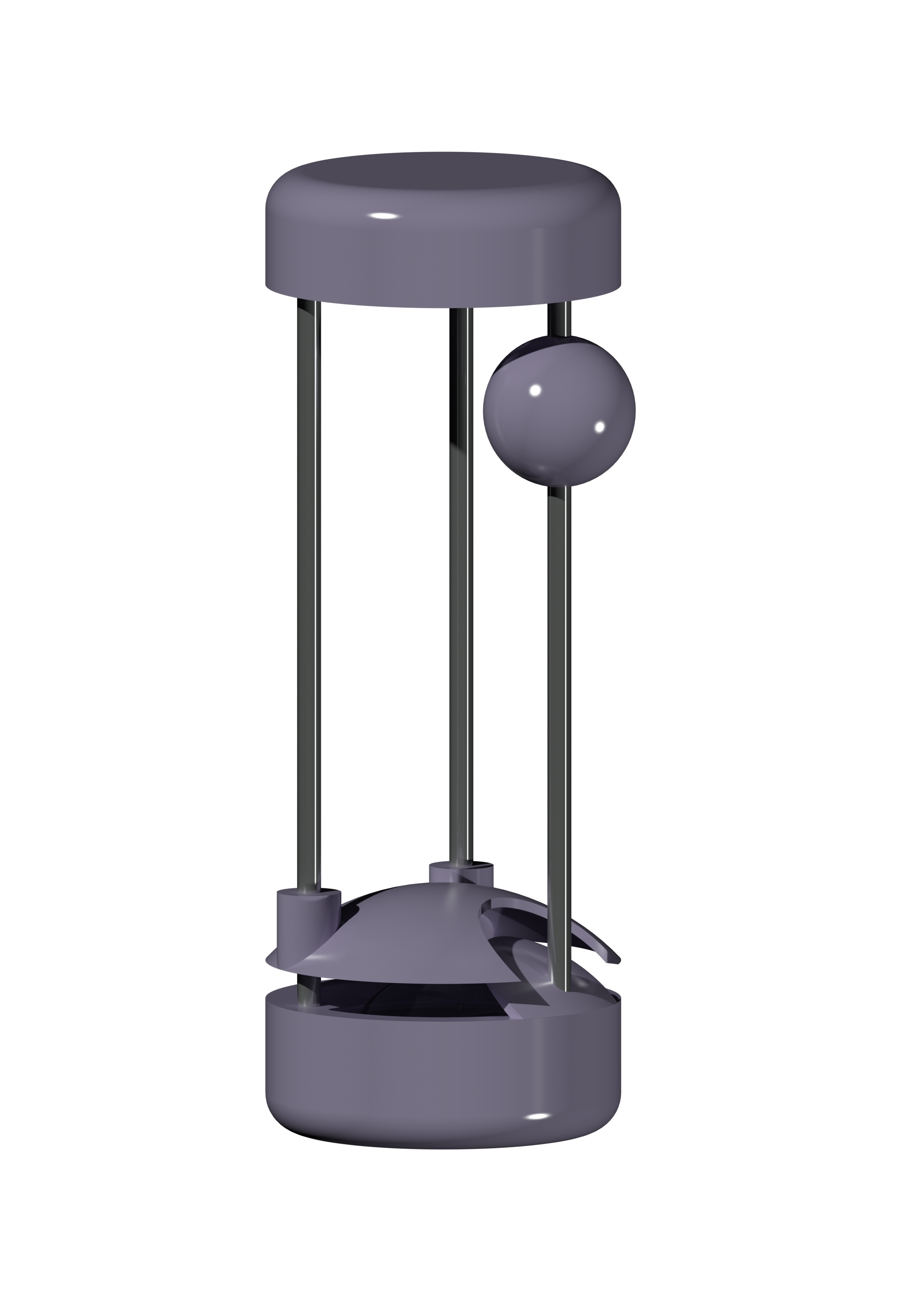
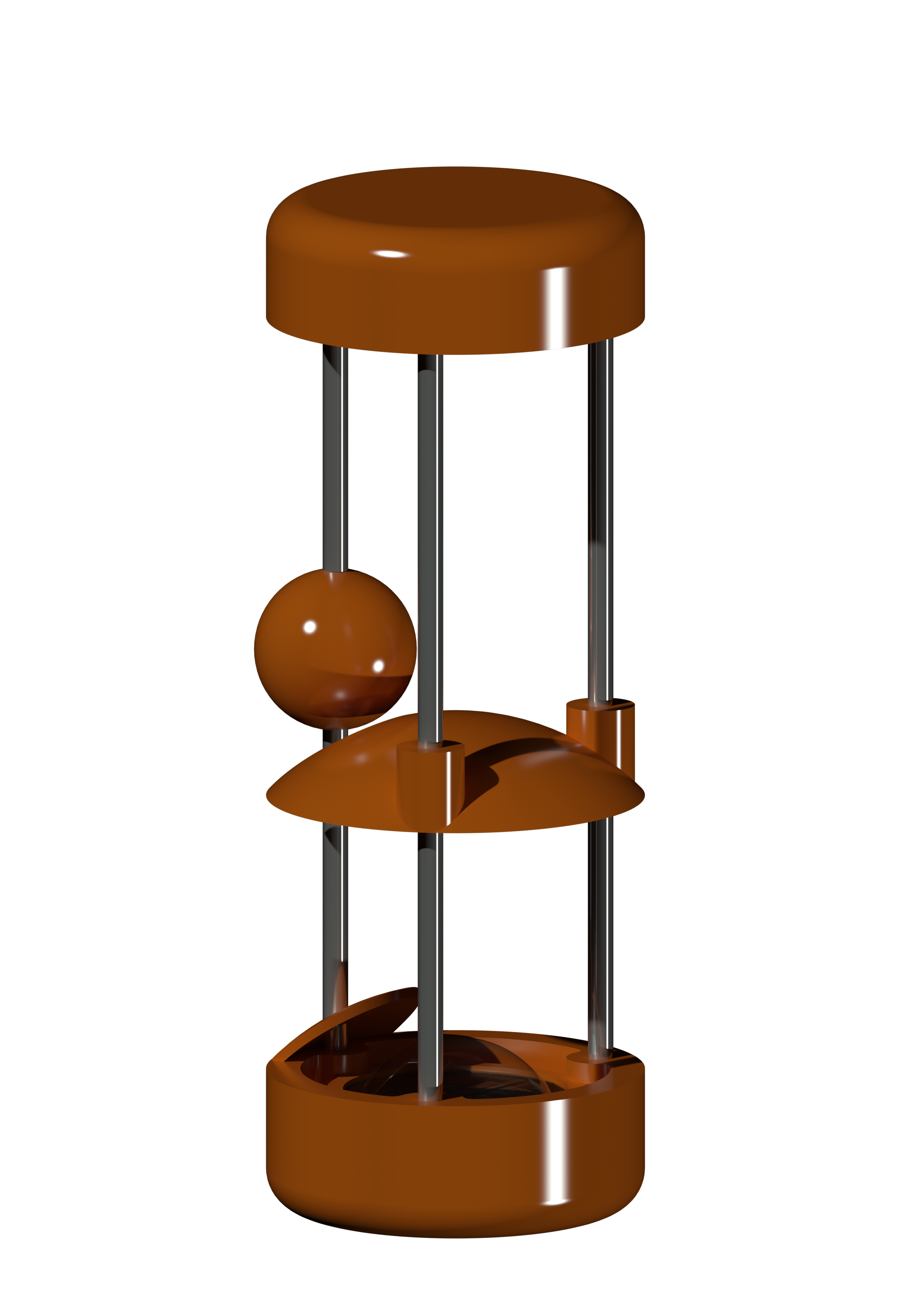
After settling on the proportions of the base and upper and making some adjustments to tolerances, I made the updated pieces in CAD and printed them out. I then installed the pulley insert and placed the lamp in the new base. After testing the fitment of the new reflector carriage, I began to adhere the mirror tiles. I then put the pieces together to test the changes in the light projection and reflection.
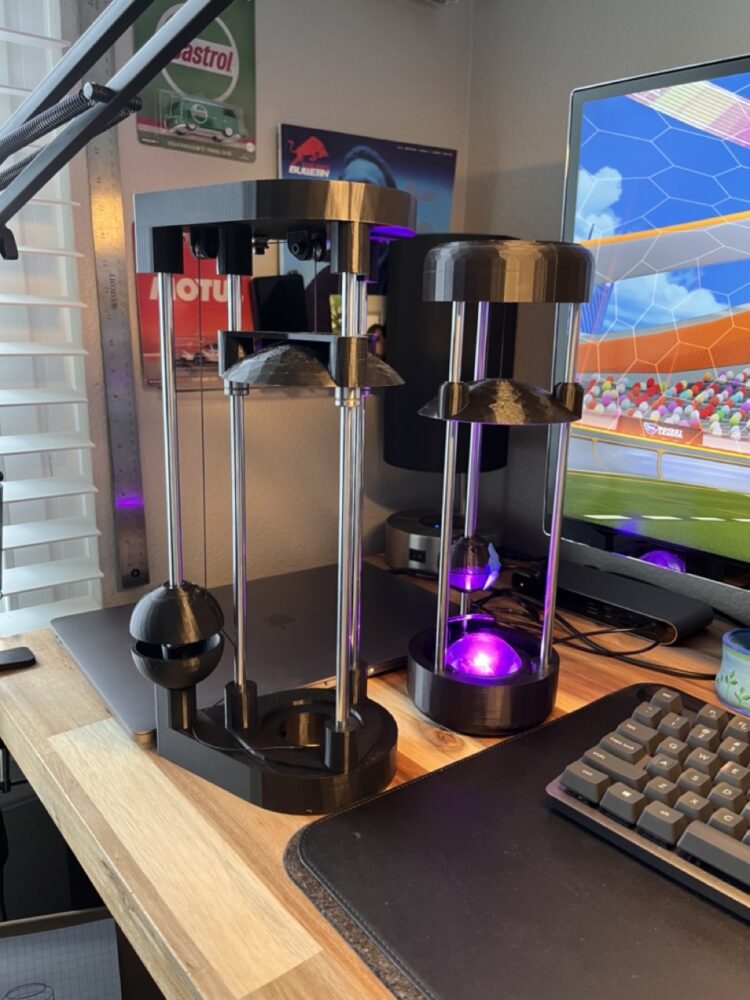
This picture shows the differences between Version 2 and Version 3. Although both share a similar function, Version 3 more closely matches my aesthetic goals for this project.
Below are some pictures of the lamp as an object as well as the lamp in functional context.
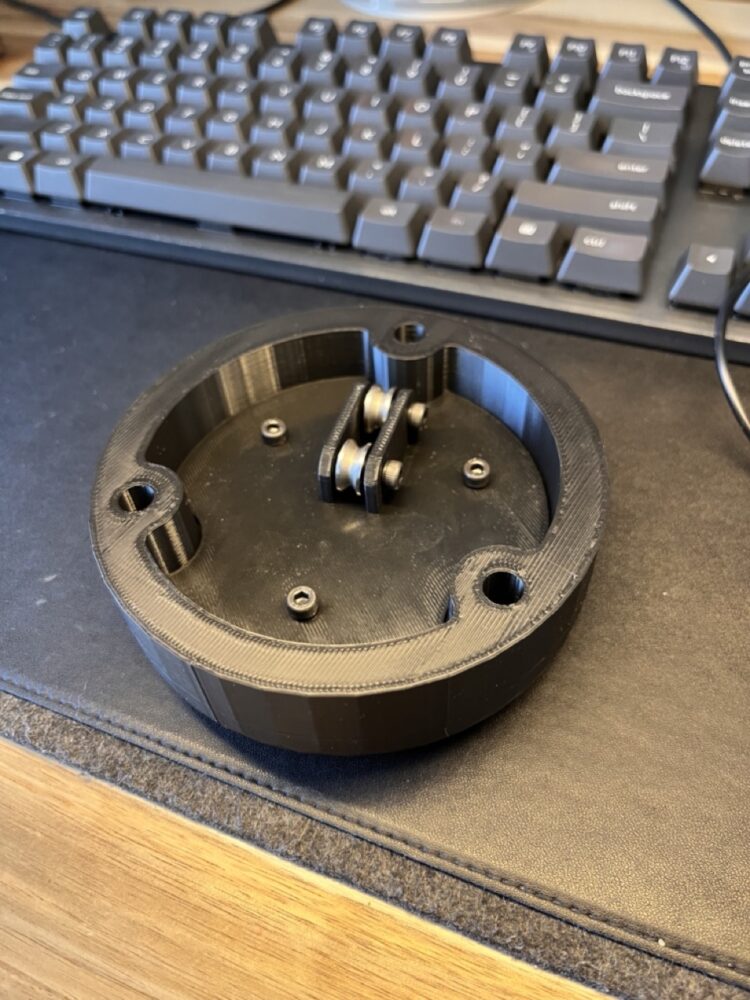
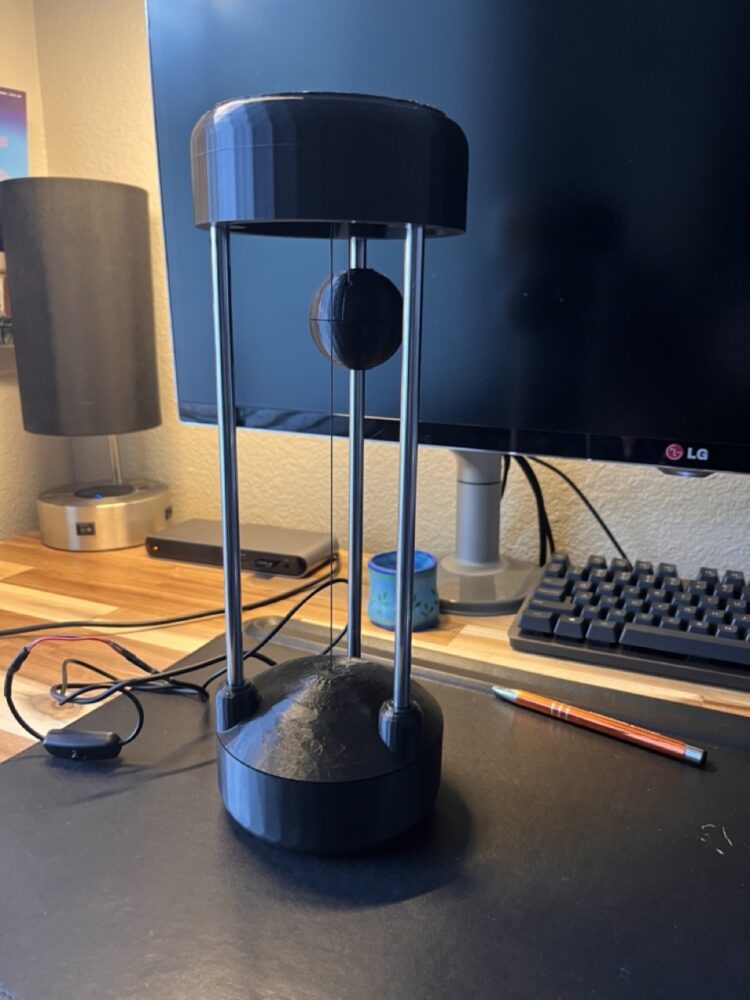
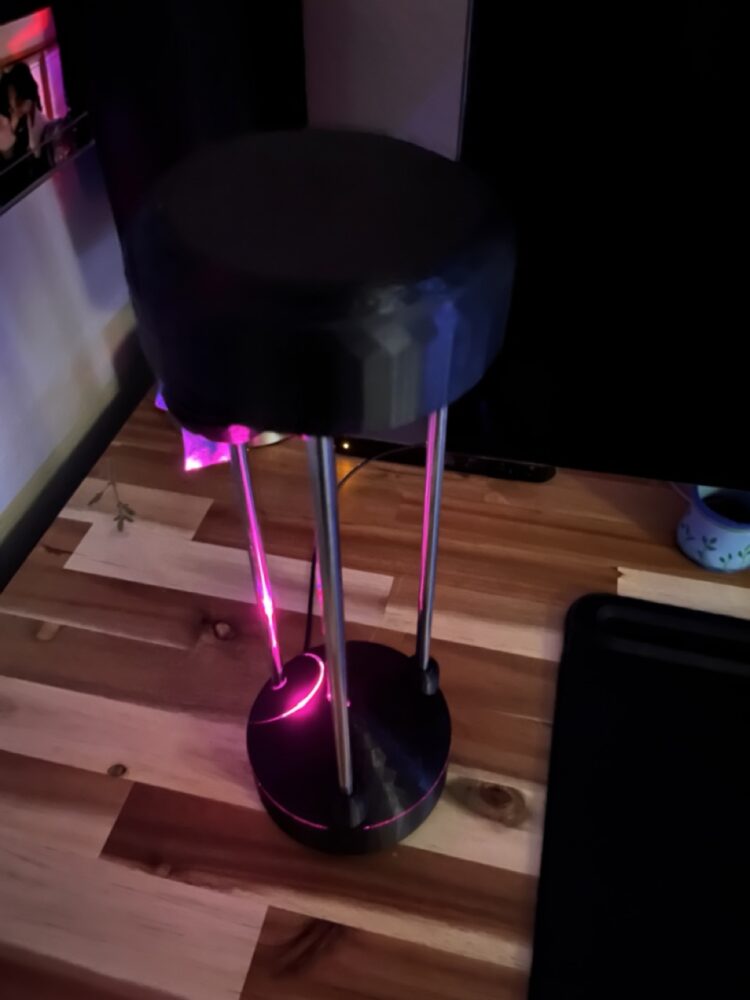

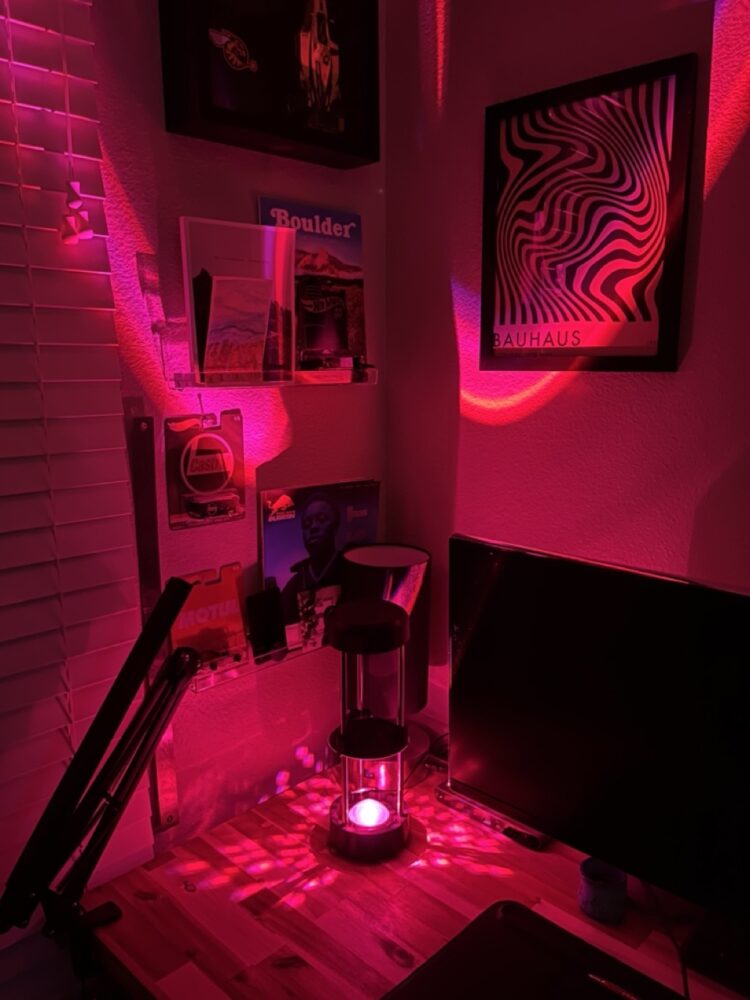
I am mostly happy with the new version. After making some adjustments to the counterweight system, the lamp will be complete and ready for sanding and painting.

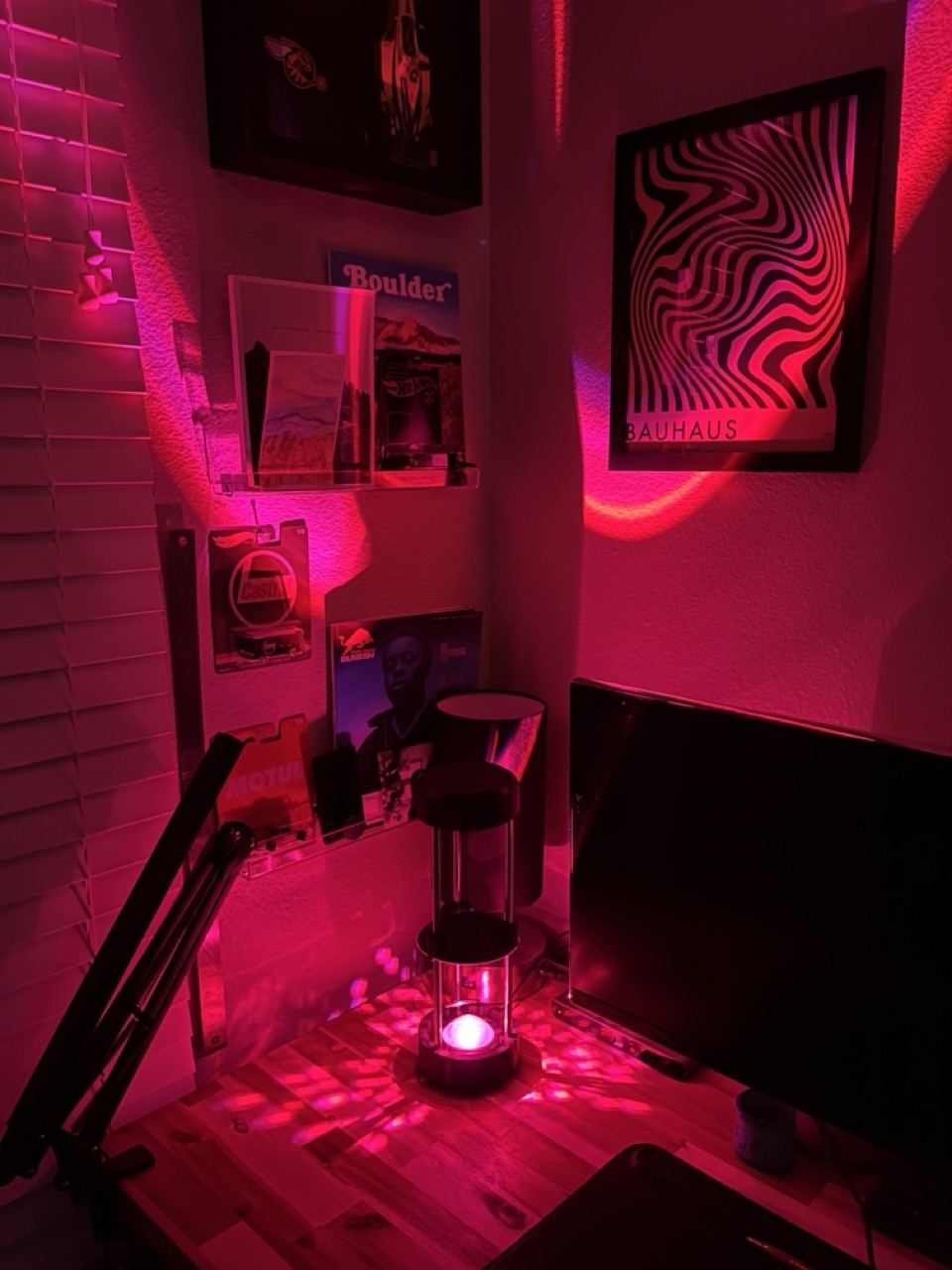
2 Comments. Leave new
Really cool design. I like the mirrors giving a disco ball effect. Do you have any worries about moving parts breaking over time? Are you designing for any kind of long term reliability?
Hey Adam! Thank you for your comment. By happy coincidence, most of the moving parts and supporting hardware are from my robotics part supply and can support a lot more weight and stress than required for the relatively lightweight reflector carriage and counterweight sphere. The only issue I foresee with long term reliability is the pulley system. If the sphere is raised too violently, the added slack can cause the braided rope to slide off the v bearing and become jammed. I plan to address this by designing guides to hopefully keep the rope in place across all types of use.